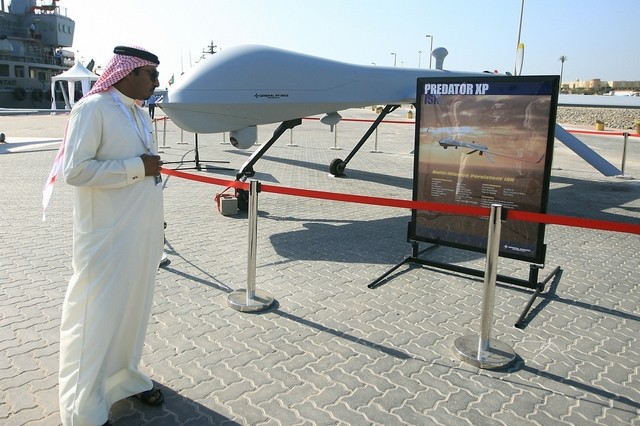The State Department notified the House and Senate foreign relations committees on Feb. 6 that it is prepared to license the export of eight Predators and associated equipment, such as electro-optical and infrared sensors, valued at $220 million, according to two U.S. officials with knowledge of the letter sent to lawmakers.
While the aircraft would be unarmed, a separate transaction would include laser designators that highlight ground targets for attack, according to information provided by the officials, who asked not to be identified before the approval is announced.
The unarmed Predator XP model made by San Diego-based General Atomics would be the third major U.S. defence system the U.S. has sold the U.A.E., one of its closest allies outside the North Atlantic Treaty Organization. The State Department this month approved its first policy for selling unmanned aircraft, including armed versions of General Atomics’ Predator and Reaper systems.
The congressional committees have 30 days to review the proposed transaction with the U.A.E. Unless they move to block it, the way will be clear for the direct sale between the company and the country that was announced in 2013. The committees already have approved an informal notification, so it’s unlikely they will oppose the final step.
General Atomics spokeswoman Kimberly Kasitz confirmed the Feb. 6 notification in an e-mail while declining to elaborate on it. The U.A.E.’s press office in Washington said in an e-mail that it declined to comment.
Previously, the U.A.E. has been sold advanced “Block 60” F-16 fighters made by Lockheed Martin Corp. that are being used in airstrikes against Islamic State extremists in Syria, as well as U.S. Army air-defense systems.
U.S. defence officials, including chief Pentagon weapons buyer Frank Kendall and Vice Admiral Joe Rixey, director of the Defense Security Cooperation Agency, are attending the IDEX 2015 International Defence Exhibition in Abu Dhabi, the U.A.E.’s capital, through Wednesday.
The Predator XP is an unarmed, export version of the U.S. Air Force model that’s used for ground attacks with laser-guided Hellfire missiles and reconnaissance while flying 35-hour orbits as high as 25,000 feet (7,620 meters).
Its surveillance equipment includes a wide-area maritime radar that the Emirates could use to patrol the Persian Gulf. The State Department is prepared to license synthetic aperture radar and mobile ground control stations, according to the officials.
Once Congress approves the sale of the equipment “we then have to go back in and find funds, because this contract was signed two years ago,” U.A.E. Ambassador to the U.S. Yousef Al Otaiba told Bloomberg Government in January. “It should be approved within the next several months.”
Source: Bloomberg

